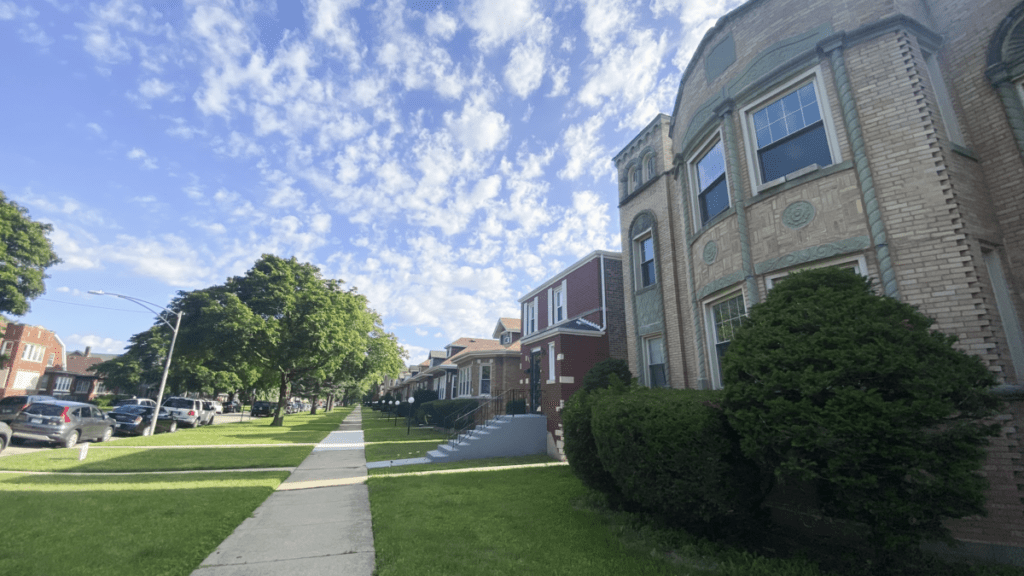Chatham – A Historical Overview
Chatham, one of the 77 designated community areas in Chicago, Illinois, is a significant hub that has played a crucial role in the city’s development.
Location and Geographic Overview
Situated on Chicago’s South Side, Chatham is bordered by a jagged boundary that lies within the 79th and 95th Streets, the Illinois Central Railroad and the Dan Ryan Expressway.
Early History
In the early stages, the area which is now known as Chatham was more suitable for duck hunting than human habitation. Known as “Mud Lake” to hunters and “Hogs Swamp” to the farmers, the region began to see some settlement in the 1860s. The first few structures in the area were corncribs assembled by the Illinois Central in 1860 along the tracks between 75th and 95th Streets.
Industrial and Residential Development

The industrial development in the area began after 1876 with the establishment of the Cornell Watch Factory by Paul Cornell, the founder of Hyde Park, at 76th and the Illinois Central tracks. By 1900, steel mills that had been constructed along the lakefront and the Calumet River provided employment opportunities for European immigrants settling in Chatham.
The residential expansion and population growth in Chatham began earnestly in the 1880s with the subdivision of three small areas within the community. The first permanent residents were Italian stonemasons who built frame houses in what is now Avalon Park in the mid-1880s. When Chatham was annexed to Chicago as part of Hyde Park Township in 1889, Hungarian and Irish railroad workers inhabited the Dauphin Park subdivision, which lies in the eastern portion of what is now Chatham.
Population Growth and Property Standards
The 1920s witnessed dramatic increases in both property values and the population of Chatham. As new residents of mostly Swedish, Irish, and Hungarian American origin took occupancy in numerous bungalows, the population swelled from 9,774 to 36,228 by the end of the decade. This reflected the community’s evolution from working-class to middle-class. Another significant event was the development of the Chatham Park housing complex in 1941, which stimulated the growth of Cottage Grove Avenue as a shopping district.
Racial Transition and Middle-Class Evolution
Chatham experienced a swift racial transition. In 1950, the African American residency of Chatham was less than 1 percent. However, by 1960 it had jumped to 63.7 percent. Unlike several other neighborhoods, however, Chatham’s racial transition was relatively uncontested. The West Chatham Improvement Association attempted to keep the area reserved for whites, but other community leaders wanted to avoid the violence that occurred just to the north in Greater Grand Crossing.
By the time the racial changeover was completed, African American residents of Chatham had worked diligently to maintain the middle-class character of their community. As a result, Chatham has the distinct honor of being perhaps the only neighborhood in Chicago that developed from a European American middle-class community into one composed of middle-class African Americans.

Business Success and Economic Instability
Chatham has been home to some of the most successful black businesses, including the Johnson Products Company (Ultra Sheen Hair Products), the Independence Bank of Chicago, Seaway National Bank of Chicago, and a branch of the Illinois Service Federal Savings and Loan Association. However, towards the end of the 1990s, reports of crime, property neglect, and economic instability were on the rise.
Demographics and Recent Development
The declining population, down from a 1970 high of 47,287 to 37,275 in 2000, was aging. However, community leaders and residents devoted their energies to a number of revitalization projects. They were determined to ensure that Chatham would remain, in the words of real-estate developer Dempsey Travis, “the jewel of the Southeast Side of Chicago.”
Politics and Notable People
The Chatham community area has consistently supported the Democratic Party in the past two presidential elections. It is also home to several notable people, including professional baseball player Ernie Banks, rapper Chance the Rapper, and U.S. Senator from Illinois Roland Burris.
Education and Schools
Chicago Public Schools operates public schools serving Chatham. The schools serving students from the Chatham neighborhood include Simeon Career Academy, Arthur R Ashe Elementary School, Arthur Dixon Elementary School, and James E McDade Elementary Classical School, among others.
Transportation
The transportation system in Chatham is robust. The CTA Red Line stations at 79th street and 87th street are located in the Chatham community area. Furthermore, the Metra Electric District, providing daily service between downtown Chicago and the southern destinations of University Park and Blue Island, runs along the eastern border of Chatham.
Chatham is a community that has seen significant growth and change over the years. From its early days as a hunting ground to its current status as a middle-class African American hub, the neighborhood is a testament to the resilience and adaptability of its residents. The neighborhood continues to thrive and evolve, maintaining its unique identity while adapting to the changing times.


